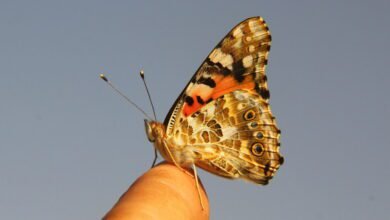Are we loving our pets to death?

This article is part of our special section on pets, about scientists’ growing interest in our animal companions.
Pets are more popular than ever. Approximately two-thirds of American households have at least one pet, up from 56 percent in 1988, according to the American Pet Products Association, and Americans spent $136.8 billion on their pets in 2022, up from US$123.6 billion in 2021. An estimated 91 million households in Europe own at least one pet, an increase of 20 million in the last decade. The pet population in India reached 31 million in 2021, up from 10 million in 2011.
And our pets are becoming more and more like us – or at least that seems to be our goal. We pamper them with personalized nutrition plans and backpack carriers, canine hydrotherapy, and boutique cat hotel stays. At All the Best, a chain of upscale pet stores in Seattle, the most popular items are enrichment toys for felines and canines, designed to stimulate them and bring happiness to animals that are increasingly “lonely and bored.” , said Annie McCall, the chain’s director of marketing.
Now, some animal welfare ethicists and veterinary scientists wonder whether, in our efforts to humanize our pets, we have gone too far. The more we treat pets like people, they argue, the more limited and dependent on us our pets’ lives become, and the more health and behavioral problems our pets develop.
“We now see pets not just as family members, but as equivalent to children,” said James Serpell, professor emeritus of ethics and animal welfare at the University of Pennsylvania School of Veterinary Medicine. “The problem is that dogs and cats are not children and owners have become increasingly protective and restrictive. Therefore, animals are not able to express their own canine and mischievous natures as freely as they could.”
The health risks start with reproduction, of course. One of the most popular dog breeds in the United States is the French Bulldog, a member of the brachycephalic family of flat-faced dogs that get along well with people but have difficulty breathing, among other serious health problems.
But we are also changing the relationship between our animals and the environment around them. Concerned about bird predation, many cats now spend their entire lives indoors. Until the late 1970s, even city dogs spent most of their time outdoors, either in backyards or roaming loose in the neighborhood. Now, said Jessica Pierce, a Colorado bioethicist whose work focuses on animal-human relationships, “the free-roaming dog is considered against the natural order of things.”
One of the fastest growing market segments is the so-called pet confinement sector, which includes crates and indoor fences, as well as electronic harnesses and collars. “The level of restriction dogs face is profound,” Pierce said. While dogs several decades ago were more likely to be hit by cars, she added, “these risks have been offset by freedom of experience and movement.”
The modern pet paradox, in a nutshell: “Owners don’t want dogs to act like dogs.” Dr.Serpell said.
Although dogs are allowed in an increasing number of human spaces – restaurants, offices, stores, hotels, as well as in more parks with designated dog runs – their growing presence has not translated into greater independence.
Confinement and isolation, in turn, have led to an increase in animals’ separation anxiety and aggression, Dr. Serpell said. Approximately 60% of dogs and cats are now overweight or obese. And due, in part, to the burden and expense inherent in modern pet ownership—veterinary fees, pet sitting, boarding costs—more people are abandoning animals to animal shelters, leading to higher rates of euthanasia. . In 2023, more than 359,000 dogs were euthanized in shelters, a five-year high, according to Shelter Animals Count, an animal advocacy group.
“We’re in a weird time of pet obsession,” Pierce said. “There are many of them and we maintain them with great intensity. It’s not good for us and it’s not good for them.”
It’s true that domesticating an animal has always meant finding a balance between its nature and ours. “Defining freedom for a dog, an animal that has been artificially domesticated and selected by humans for so long, is a really interesting conundrum,” said Alexandra Horowitz, a canine cognition researcher at Barnard College.
She drew a contrast with free-ranging dogs, a category to which the majority of the world’s approximately 900 million dogs belong. Free-roaming canines lead shorter lives and are not guaranteed food, Dr. Horowitz noted, but can make all their own choices. “That’s an interesting model for us to look at – thinking about how to make a dog’s life more choice-rich, so they’re not just captive to our whims all the time, without putting society in general at risk,” she said.
In recent years, Scandinavian countries have begun banning the breeding of some dog breeds that are particularly prone to disease, such as the Cavalier King Charles spaniel. In Sweden it is illegal to leave pets alone at home for long periods of time; In both Sweden and Finland, crating animals at home is illegal in most cases.
But it’s unclear whether these animal welfare policies reconcile or reinforce the fundamental paradox of modern pet farming, said Harold Herzog, a professor emeritus of psychology at Western Carolina University who studies human-animal relationships. “The more we see dogs and cats as autonomous creatures, the less we can justify owning them as pets,” he said.
A few years ago, Dr. Herzog vacationed on the island of Tobago and spent much of his time observing the stray dogs that roamed the landscape. “I asked myself, ‘Would I rather live in Manhattan like a spoiled dog, or would I rather be a dog in Tobago hanging out with my friends?’” Herzog said. He concluded: “I’d rather be a dog in Tobago.”
This isn’t a practical option for most people, nor is it necessarily a good one for the Tobagos of the world. Instead, for the modern pet owner, Dr. Serpell offered this advice: “Always enjoy your dog’s company. But dogs are not people. Get to know the animal from its own perspective, rather than forcing it to obey yours. It allows you to vicariously experience the life of another being.”




